![]()
![]()
![]()
Use LEFT and RIGHT arrow keys to navigate between flashcards;
Use UP and DOWN arrow keys to flip the card;
H to show hint;
A reads text to speech;
23 Cards in this Set
- Front
- Back
|
What categories of sickles and curets do we use? |
|
|
|
What are the 3 components of an instrument? |
|
|
|
What are the components of the shank? |
|
|
|
How are extended shanks different than standard shanks? |
|
|
|
Shank Design: Simple shank w/ short functional length |
Use: Supragingival use on anterior teeth |
|
|
Shank Design: Simple shank w/ long functional length |
Use: Subgingival use on anterior teeth |
|
|
Shank Design: Complex shank w/ short functional length |
Use: Supragingival use on posterior teeth |
|
|
Shank Design: Complex Shank w/ long functional length |
Use: Subgingival use on posterior teeth |
|
|
How are anterior and posterior sickle scalers different? |
- Limited to use on anterior sextants - Not recommended for use on root surfaces
- Designed for use on posterior sextants - May also be used on anterior teeth
|
|
|
What is the design of the sickle scaler? |
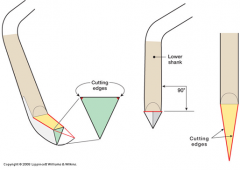
|
|
|
What are the uses of a sickle scaler? |
|
|
|
Characteristics Sickle Scaler Designs We Use: Nevi 1: Sickle End |
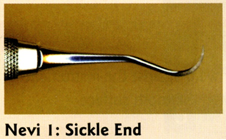
|
|
|
Characteristics Sickle Scaler Designs We Use: Nevi 1: Disk End |
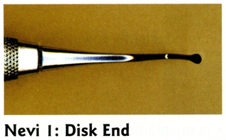
|
|
|
Characteristics Sickle Scaler Designs We Use: Nevi 2 |
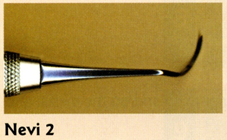
|
|
|
Characteristics Sickle Scaler Designs We Use: S204S: Double-Ended Sickle |
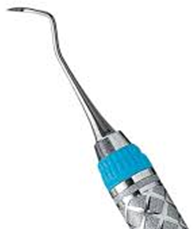
|
|
|
Design of the Universal Curet |
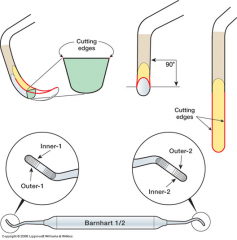
|
|
|
Uses of the Universal Curet |
|
|
|
Universal Curets We Use |
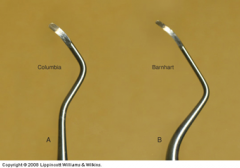
|
|
|
Design of the Area-Specific Curet |
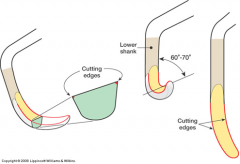
|
|
|
Periodontal Debridement: Definition and Goal |
|
|
|
Curettage: Definition |
|
|
|
What must be considered when selecting an instrument for scaling? |
- Anterior - Posterior - Crowns or roots (how far subgingival)
- Light, moderate - Heavy - Tenacious |
|
|
Current Focus - Primary Areas: Anterior sickle scalers Posterior sickle scalers Columbia 13/14 universal curet Barnhart 5/6 universal curet |
|

